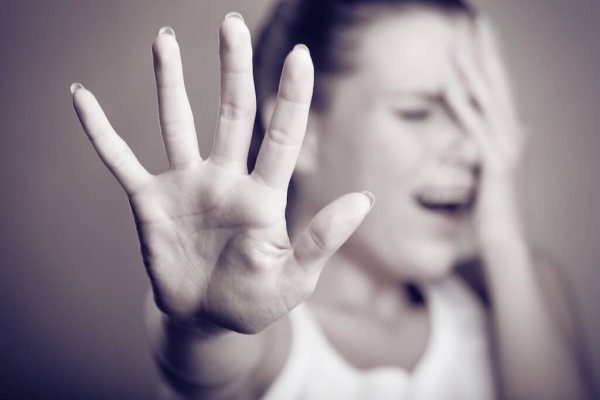Bipolar Disorder - Like Living On A Roller Coaster

Bipolar disorder is perhaps one of the most fascinating disorders to study for those who are interested in clinical psychology. The idea that a person can move between two different extremes, or poles, fascinates, and at the same time, terrifies us. There is a popular conception of bipolar disorder that can lead us to believe that we too could easily suffer from it and that there is no one, however intelligent, who enjoys absolute emotional stability.
On another note, how many times have you heard that people with bipolar disorder have a double personality? What is the true nature of the disorder which causes a person to have “different personalities”? What are the differences between bipolar disorder and borderline personality disorder?
Bipolar Disorder – What is it?
Bipolar disorder is an affective disorder that is characterized by changes in mood, with phases of mania (euphoria), hypomania (euphoria of lesser duration), or mixed phases, which generally alternate with depressive episodes. According to the criteria of the International Classification of Diseases (ICD-10) and the Manual of Statistical Diagnosis of Mental Disorders (DSM-IV), there are different types of bipolar disorder:
- Bipolar disorder I: at least one episode of mania or a mixed episode (mania and hypomania), which may happen before or after depressive episodes.
- Bipolar disorder II: less severe manic symptoms that are called hypomanic phases and depressive episodes.
- Cyclothymia: alternating hypomania with subclinical depressive disorders.

It is a relatively frequent disorder that occurs in all ages and sexes, although it appears more between 15 and 25 years old. When the onset occurs in someone over 60, studies tell us that it is likely that the disorder has an organic origin which can be treated accordingly.
Like the great majority of disorders, it affects the person’s functioning and well-being. Suicide rates are very high among bipolar people – as much as 15% of patients – and these are more frequent in the depressive or mixed phases.
The ups and downs
The DSM-IV-TR establishes criteria for the different types of manic, hypomanic, depressive, and mixed episodes.
The manic episode is a mood change that lasts at least a week, in which three or more of the following symptoms persist:
- Exaggerated self-esteem.
- A decrease in sleep requirements.
- More talkative than usual.
- Outpouring of ideas.
- Difficulty in maintaining attention.
- Psychomotor agitation.
- Excessive involvement in pleasurable activities has great potential for serious consequences.
- This disorder is serious enough to cause work and social deterioration, hospitalization, or psychotic symptoms.
The hypomanic episode is a mood change that lasts at least four days with three or more of the symptoms indicated above for the manic episode. The alteration of mood and change in activity can be observed by others, but it is not considered as sufficiently serious and there are no psychotic symptoms.
The major depressive episode exhibits the following symptoms for 2 weeks:
- Loss or significant increase in weight or appetite.
- Insomnia or hypersomnia.
- Agitation or psychomotor slowing.
- Fatigue.
- Feelings of excessive uselessness or guilt.
- Decrease in concentration or decision-making.
- Recurrent thoughts of death.
- Either a depressed mood for most of the day or general apathy.
The mixed episode combines the symptoms of a manic episode and a major depressive episode, almost every day, for at least 1 week.
In all these types of episodes, the symptoms are not due to the physiological effects produced by a substance or treatment. If these symptoms are the effect of a substance or medication that has been administered, we cannot diagnose it as bipolar, even if someone meets all the above criteria.
“The treatment of people with psychopathological disorders should the same as in other diseases. We should not stigmatize the patient or blame them for suffering from it.”

The differences between Bipolar Disorder and Borderline Personality Disorder
Borderline personality disorder (BPD) is among the most serious personality disorders. The lack of emotional regulation of BPD must be differentiated from the imbalance that occurs in bipolar disorder. BPD has the following characteristics:
- Global instability affects the state of the mind, self-image and behavior.
- Intrinsic and permanent difficulty in establishing stable bonds, which does not occur in bipolar patients.
- Impulsiveness, uncontrolled anger, self-aggressiveness, and outward aggressiveness.
- Suicidal behavior, threats or gestures, or self-mutilation.
- Risky behaviors are usually set off by interpersonal conflicts and relationship problems (fear of rejection or abandonment).
- Feelings of emptiness and boredom.
Bipolar disorder does not generate different personalities
When separation affects the highest level of our being – our personality – then we are dealing with dissociative identity disorder (split or multiple personality).
People with multiple personalities witness two or more different identities (even up to a hundred), where at least two of them take control of the behavior repeatedly. In addition, people with this disorder feel unable to remember important personal information depending on the personality that is dominating at that moment.
The vast majority of people working in mental health believe that other interventions are necessary in addition to pharmacological ones. Individual or group psychotherapy are very useful in these cases. It is also recommended that pharmacological treatment be reduced if the therapeutic effects of these are not significant.
Finally, diagnostic labels help a more personalized treatment. But let’s not forget that each person is different, and their health condition is no exception. In this sense, two people with the same diagnosis can have a very different experience of the disorder that they “share”.

Bibliographic references:
Belloch, A., Sandín, B., & Ramos, F. (2012). Manual of psychopathology.
McGraw-Hill’s Guide, G. D. T. (2012). of Clinical Practice on Bipolar Disorder.
Clinical Practice Guideline on Bipolar Disorder. Madrid: Ministry of Health, Social Services and Equality. University of Alcalá. Spanish Association of Neuropsychiatry.
This text is provided for informational purposes only and does not replace consultation with a professional. If in doubt, consult your specialist.








